Recent slips, trips and falls involving stairs
A member has reported an increase in the number of reported incidents involving gangways and stairs. This safety flash serves to raise awareness and to highlight the serious incidents involving slips, trips and falls on gangways and stairs on offshore vessels and installations.
Our member noted the following:
- Anti-slip products can become ineffective due to contamination – contamination can be classed as anything that ends up on a step, such as oil, grease, dirt, and dust;
- There was poor hazard awareness and risk perception of the ‘routine’ task;
- Injured persons failed to identify poorly positioned handrails when obstructed by objects such as cables, cable trays and box sections
- Injured persons failed to identify handrails which were not at the recommended height, thus forcing personnel to lean forward during descent
- There was a lack of consideration for the environment -weather, noise, humidity, condensation, lighting and vessel movement.
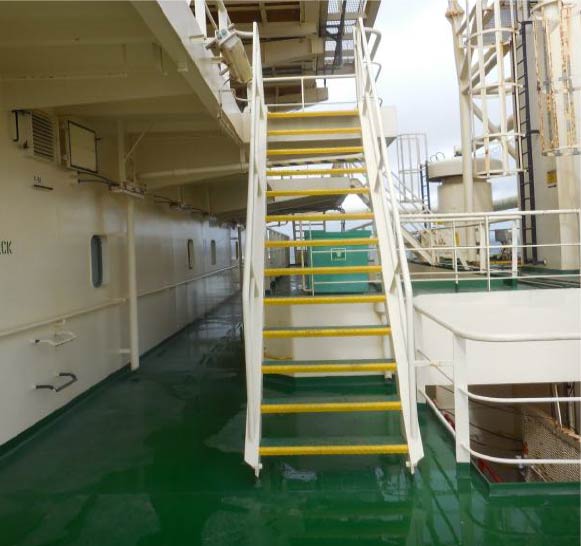
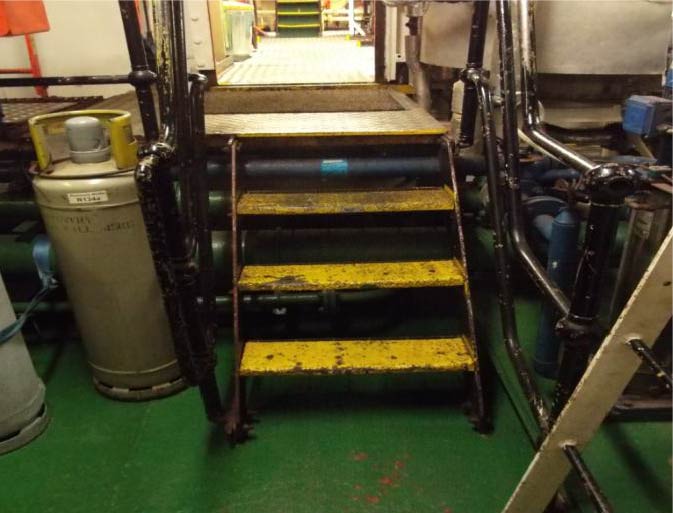
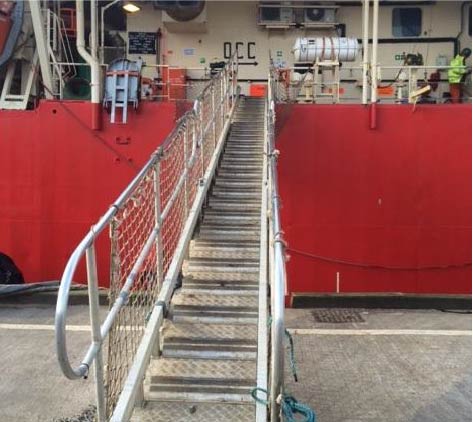
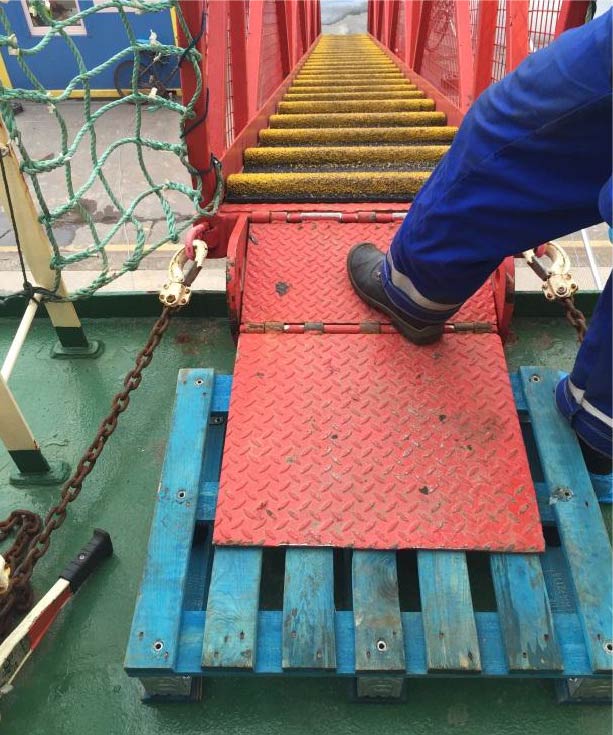
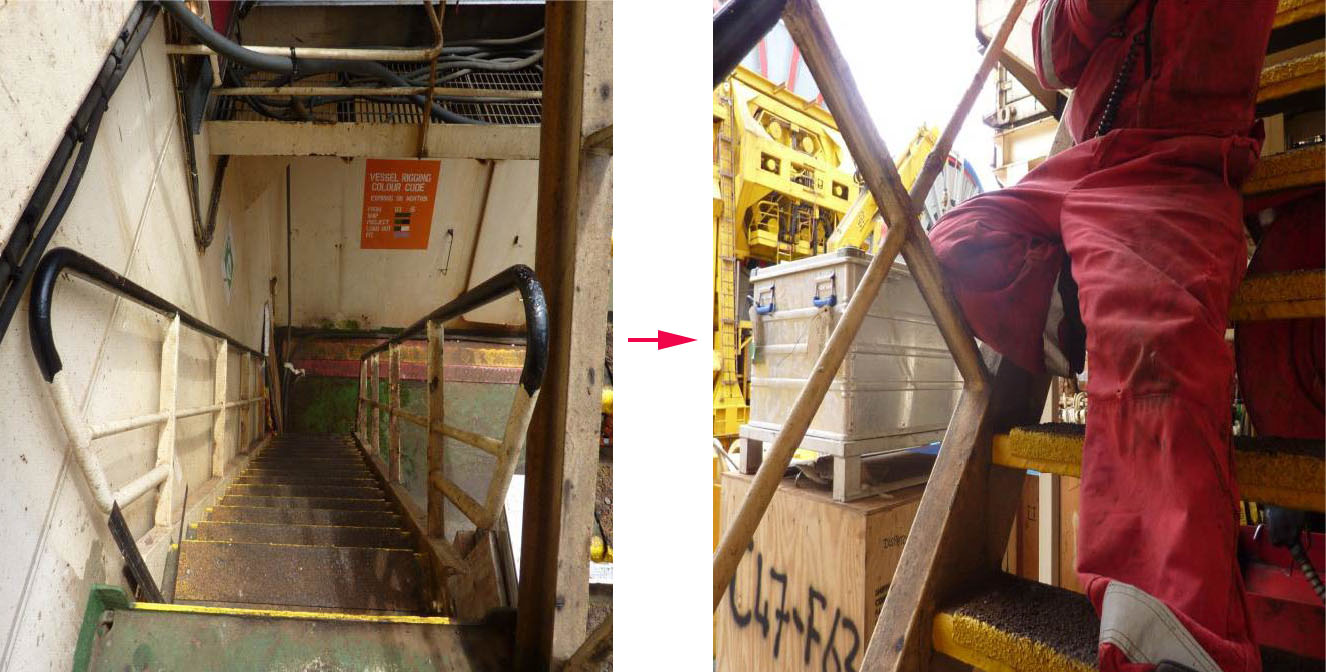
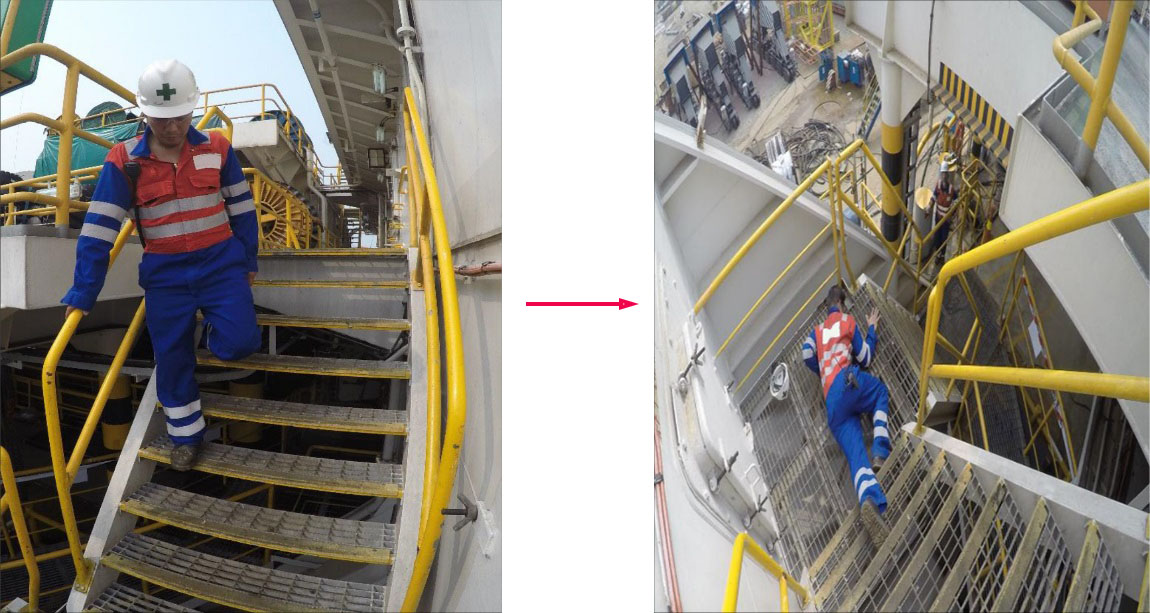
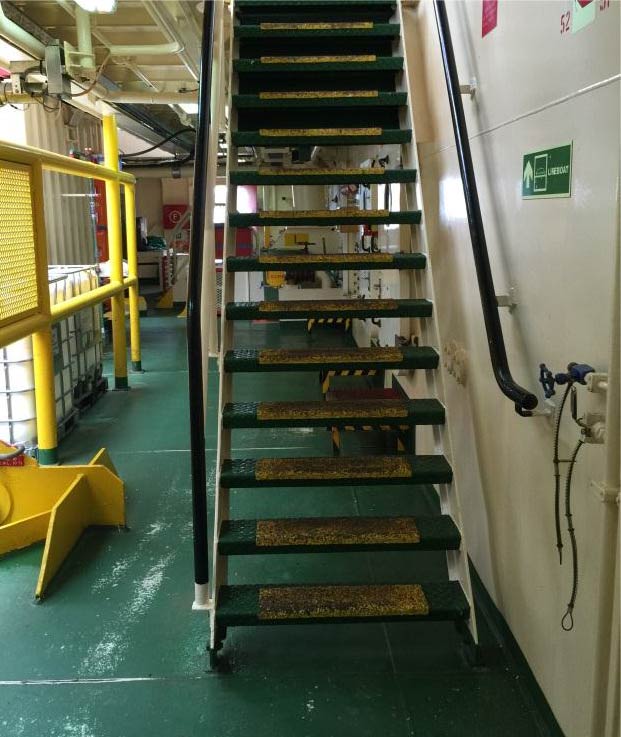
Our member further noted:
- Personnel were not using handrails when ascending or descending stairs – they should be holding handrails at all times;
- Suitable footwear should be worn as this can play an important part in preventing slips, trips and falls – use appropriate footwear and ensure they are properly secured at all times;
- For some, safety only becomes an important consideration when they are doing what they perceive as a ‘dangerous’ job or task. They may consider that safety procedures can be bypassed or ignored when the task is simple, small, ‘routine’ and presenting seemingly little risk of injury. Unfortunately, this type of thinking is why many ‘routine’ activities can end up resulting in incidents and injuries;
- All worksite stairs should be kept free from hazards through effective planning, risk assessment, inspection and housekeeping;
- All the incidents described here were wholly avoidable. Luckily many of these cases resulted in minor injuries; however the potential was there for a more severe injury to have been sustained.
The following conclusions were drawn about causes:
- Stairway falls are usually caused by a combination of factors. Falls may be influenced by stair design, stair maintenance, the environment, and the characteristics of the stair user (age, gender, physical fitness) or their behaviour;
- Control measures to help reduce stair fall occurrence could include:
- Regular housekeeping, maintenance and inspection – these are important to reducing the likelihood of stair fall;
- Features such as handrails, colour-contrasting anti-slip products and adequate lighting – these will improve the stairway environment;
- People or Human Factors -how people act and behave in their work environment – fatigue, loss of concentration, horseplay and low risk perception can play a major part in these preventable incidents.
The following actions were taken:
- A full and thorough inspection of passageways, designated walkways, stairways and landings:
- For actual damage – any necessary repairs to be made immediately
- To determine whether or not there is a requirement for anti-slip products
- To ensure that handrails are in good condition without any physical damage and adequately secured
- To ensure that handrails can be held continuously without the user encountering obstructions, such as cable trays, light fittings and box sections
- To ensure that all stairwell lighting is checked for any broken or malfunctioning lighting which should be repaired or replaced;
- In general, all the above inspection and maintenance of passageways, designated walkways, stairways and landings should be captured as part of the planned maintenance system.
Members may wish to refer to the following incident (search words: stairs):
Members should be aware that IMCA publishes a wide range of safety promotional material, including the following poster:
- Take care on the stairs (poster)
Safety Event
Published: 3 December 2015
Download: IMCA SF 20/15
IMCA Safety Flashes
Submit a Report
IMCA Safety Flashes summarise key safety matters and incidents, allowing lessons to be more easily learnt for the benefit of all. The effectiveness of the IMCA Safety Flash system depends on Members sharing information and so avoiding repeat incidents. Please consider adding [email protected] to your internal distribution list for safety alerts or manually submitting information on incidents you consider may be relevant. All information is anonymised or sanitised, as appropriate.
IMCA’s store terms and conditions (https://www.imca-int.com/legal-notices/terms/) apply to all downloads from IMCA’s website, including this document.
IMCA makes every effort to ensure the accuracy and reliability of the data contained in the documents it publishes, but IMCA shall not be liable for any guidance and/or recommendation and/or statement herein contained. The information contained in this document does not fulfil or replace any individual’s or Member's legal, regulatory or other duties or obligations in respect of their operations. Individuals and Members remain solely responsible for the safe, lawful and proper conduct of their operations.
